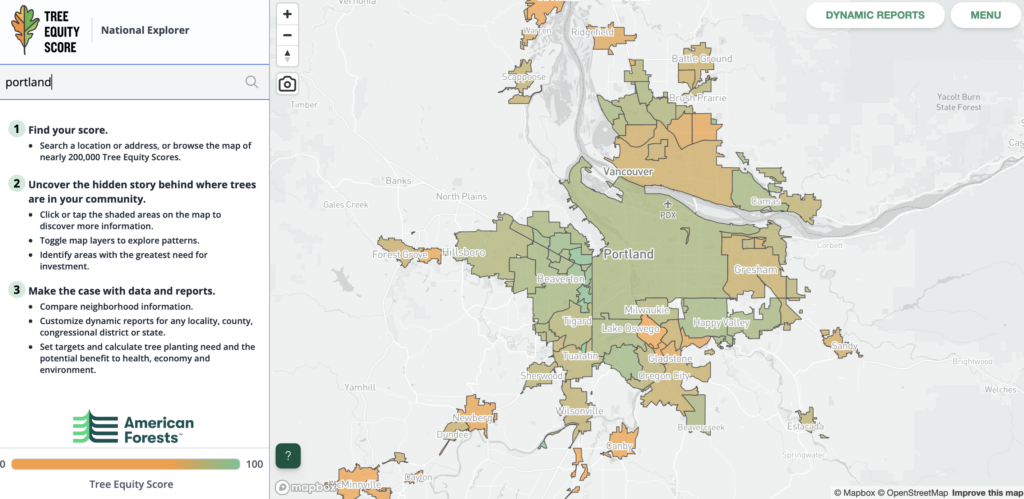![]()
Questions that this tool can answer:
- In which cities in my state are disparities in tree coverage most extreme?
- What neighborhoods in my city would benefit most from urban tree planting programs?
A map of tree cover in any city in the United States is too often a map of race and income. This is unacceptable. Trees are critical infrastructure that every person in every neighborhood deserves. Trees can help address damaging environmental inequities like air pollution.
The Tree Equity Score tool, developed by American Forests, calculates scores based on how much tree canopy and surface temperature align with income, employment, race, age and health factors in the United States. Scores are available for 150,000 neighborhoods and 486 urbanized areas (places with at least 50,000 residents). More than 70 percent of people in the U.S. live in one of these places.
Each score indicates whether there are enough trees in specific neighborhoods or municipalities for everyone to experience the health, economic and climate benefits that trees provide. The Tree Equity Score utilizes a science-based approach to determine the tree canopy cover needed in a neighborhood to ensure the people living in urban areas benefit from everything trees provide.
City government employees, community activists, urban foresters and others can use the score to make the case for planting trees in the neighborhoods that need them the most, and allocating the resources needed to do so.
Additional Resources
- This Rhode Island Tree Equity Funding, Finance & Policy Guide demonstrates how decision-makers can use the Tree Equity Score tool to develop a comprehensive strategy for tree planting, maintenance and preservation in urban areas.·
- The City of Phoenix is using TES in their 2030 tree planting goals. Here’s a good article about it.

